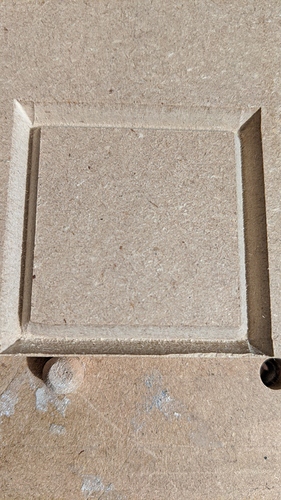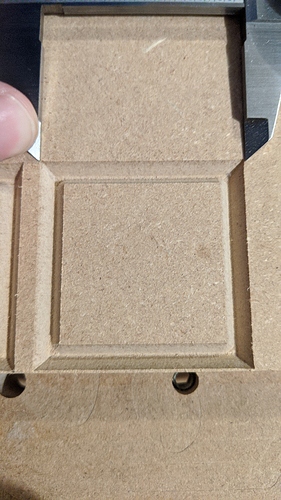Mine too. (Ignore the fact that I was the guy that said otherwise)
I had it in my head that I was making 50mm squares, when, in fact, I was making 2" squares.
#justUseMetric #ALLTheTime
So, my final tests and I’m calling it solved. Three runs with the exact same gcode.
Test 1: Just run the gcode
Corners look overcut, but, in reality, the rest of the square is undercut (as @rekluse stated).
Test 2: Run the gcode twice.
Much better…when measured, corners are just a hair overcut.
Test 3: Raise Z-Zero 0.2mm AND Run the gcode twice.
Pretty much as good as I’ll ever need. (caliper locked at 50.8mm)
The 0.2mm lift in Z was just a guess to account for the impossible perfect tip on a V-bit. The Z-offset can be adjusted exactly using math, but unless you have the bit geometry or you have cool tools like @enl_public, a guess and test is probably the way to go.


